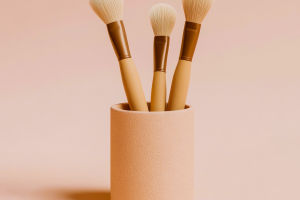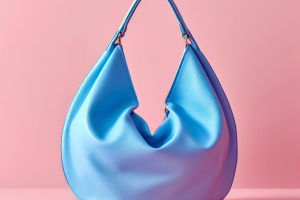Makeup brushes come in various shapes and sizes, each designed for specific applications. Whether you're a professional makeup artist or a beauty enthusiast, understanding the different types of makeup brushes and their uses can help you achieve flawless looks with ease.
This guide, Lykkers, will walk you through the basic classifications of makeup brushes and how they work.
Face Brushes
Foundation Brush
A foundation brush typically has dense, flat bristles and is designed to provide a smooth, even application of liquid or cream foundations. These brushes help blend foundation seamlessly into the skin for a natural or full-coverage finish, depending on the technique used.
Powder Brush
Larger and fluffier than most other brushes, the powder brush is ideal for applying loose or pressed powders. Its soft bristles allow for even distribution of product, making it perfect for setting makeup with a light dusting of powder.
Blush Brush
This medium-sized brush has a slightly tapered or rounded head and is perfect for applying blush to the cheeks. The soft bristles allow for gentle blending, giving the skin a natural flush.
Contour Brush
Contour brushes are typically angled, making it easier to define and sculpt the face. They are used to apply bronzer or contour powder to areas like the cheekbones, jawline, and sides of the nose.
Highlight Brush
Smaller and more precise, highlight brushes are designed for applying shimmer or highlighter to the high points of the face, such as the tops of the cheekbones, brow bones, and bridge of the nose. The tapered shape ensures precise placement and blending.
Kabuki Brush
Kabuki brushes are dense and dome-shaped, with short handles. They are excellent for buffing in powder or foundation and creating a smooth, airbrushed finish. Kabuki brushes can also be used for applying bronzer or body makeup.
Eye Brushes
Eyeshadow Brush
Flat eyeshadow brushes are used to pack color onto the eyelid. They come in various sizes to suit different parts of the eye, from the lid to the crease. A dense eyeshadow brush helps with bold color application, while softer brushes can create a more diffused look.
Blending Brush
Fluffy and tapered, blending brushes are essential for creating seamless transitions between eyeshadow shades. They help blend harsh lines and ensure a smooth, professional finish.
Angled Eyeliner Brush
An angled eyeliner brush has thin, firm bristles that allow for precise application of gel or powder eyeliner. It's perfect for creating sharp lines or winged eyeliner looks.
Brow Brush
A small, angled brow brush is used for filling in eyebrows with powder or pomade. It helps define and shape the brows for a natural or bold look.
Smudge Brush
A smudge brush has short, dense bristles that are perfect for smudging eyeliner or creating a smoky eye effect. It’s great for adding depth and drama to the eyes.
Lip Brushes
Lip Brush
Lip brushes have firm, tapered bristles designed for precise lipstick application. They are particularly useful for outlining the lips and ensuring even coverage. A lip brush can also be used to blend lip liner and lipstick for a smooth finish.
Specialty Brushes
Fan Brush
Fan brushes have soft, fanned-out bristles and are primarily used for applying highlighter. They can also be used to sweep away excess powder, such as fallout from eyeshadow application.
Stippling Brush
A stippling brush has duo-fiber bristles that allow for light, buildable coverage. It’s perfect for applying liquid foundation or cream blush for a soft, airbrushed finish.
Choosing the right makeup brushes can make a huge difference in your makeup application. Whether you need precision for eyeshadow or a soft touch for powder, there’s a brush for every purpose. Understanding how each brush functions will help you create flawless, professional-level looks.


